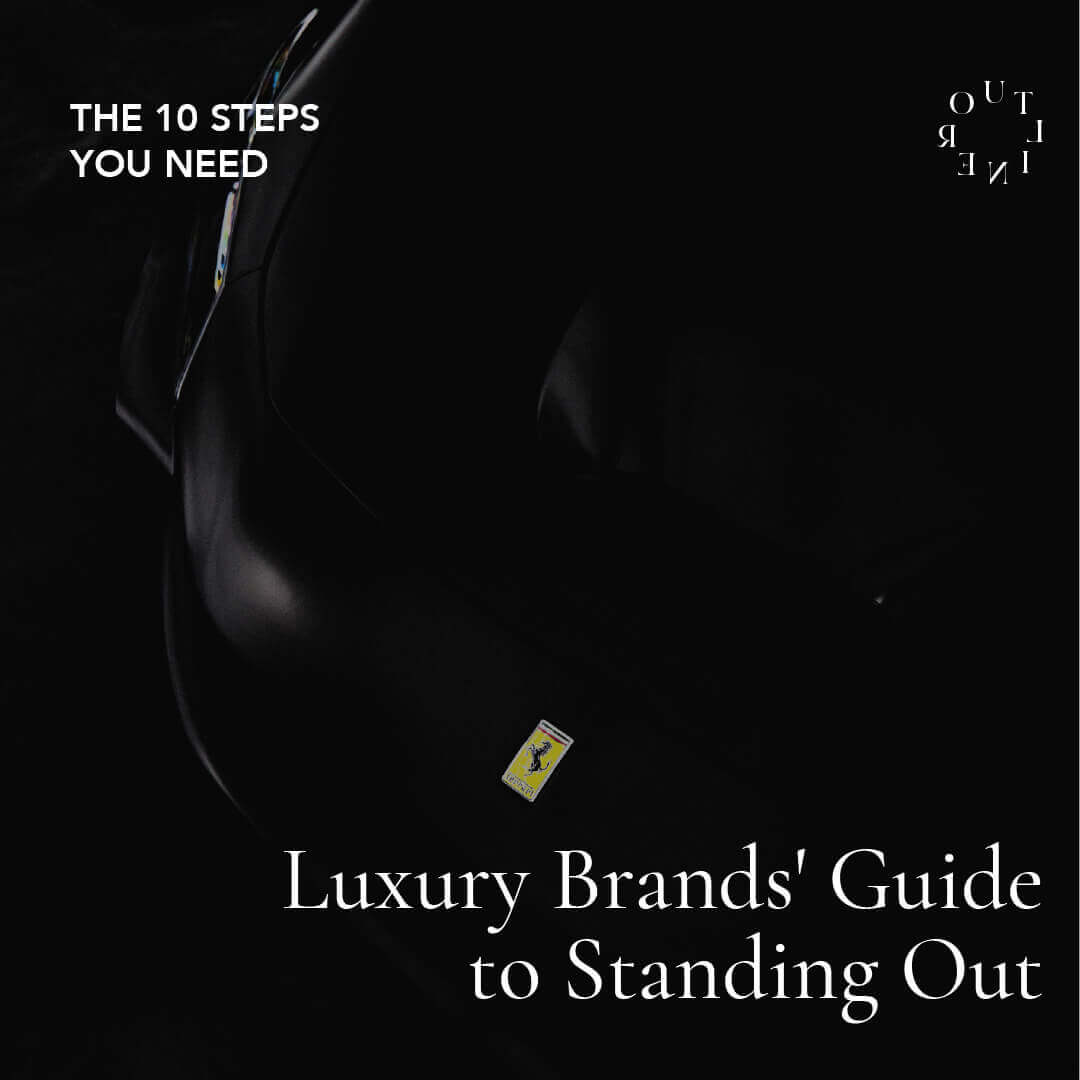Luxury Brands’ Guide to Standing Out: The 10 Steps You Need
Luxury Brands face unique challenges in distinguishing themselves in a highly competitive market. A guide for luxury brands to stand out encompasses several key strategies. Firstly, maintaining exclusivity and scarcity can enhance brand desirability among affluent consumers. Additionally, impeccable craftsmanship and superior quality are essential to justify premium pricing and uphold brand prestige. Leveraging heritage and tradition can also add depth and authenticity to a luxury brand’s narrative, appealing to consumers seeking timeless elegance and sophistication. Furthermore, personalized and immersive brand experiences, both online and offline, can deepen customer engagement and foster loyalty. Collaborations with renowned artists, designers, or influencers can inject fresh perspectives and attract new audiences while maintaining the brand’s aspirational allure. Finally, embracing sustainability and social responsibility initiatives can align luxury brands with evolving consumer values and enhance their reputation as ethical and forward-thinking entities. By integrating these strategies into their brand identity and marketing efforts, luxury brands can effectively differentiate themselves and remain relevant in a dynamic and discerning market landscape.
What is Brand Identity?
Luxury Brands identity is a concept that encapsulates the unique and defining characteristics of a brand. It determines how a brand is perceived, its personality, and its values. Brand identity includes not only the visual elements of a brand but also how the brand communicates with its target audience, evokes emotional responses, and is perceived. It comprises various elements such as the brand’s logo, colors, typography, visual style, and tone of voice. When these elements come together, they create the brand’s uniqueness and recognizability, facilitating consumers’ connection with the brand. Brand identity enables effective communication, differentiation, and memorability, contributing to the success of the brand.
Check out the 10 steps below to develop your Brand Identity:
Step 1: Define Your Brand Identity
Every Luxury Brands has its unique identity. The first step is to clearly define your brand’s character, values, and target audience. Determine what your brand represents and the emotions you wish to convey to consumers.
Example: For instance, a luxury eco-friendly fashion brand can build its brand identity around sustainability, quality, and elegance.
Step 2: Prioritize Quality
Quality is non-negotiable for luxury brands. Ensure your products and services are of impeccable quality. Do not compromise on quality and highlight it on every occasion.
Example: Italian luxury fashion brand Gucci, known for years for its quality, continuously strives to maintain this tradition of excellence.
Step 3: Create Uniqueness
Uniqueness is a hallmark of luxury brands. Develop original designs and products to set yourself apart from competitors. Ensure that customers can experience something special and exclusive that they can only find with your brand.
Example: French luxury jewelry brand Cartier emphasizes its uniqueness by using unique designs and rare gemstones.
Step 4: Tell a Story
Customers love the stories behind brands. Create a powerful story by highlighting your brand’s origins, values, and mission. Assist customers in forming an emotional connection with your brand.
Example: Swiss luxury watch brand Rolex tells an inspiring story about the brand’s origins and passion for watchmaking.
Step 5: Collaborate
Strengthen your brand by collaborating with other prestigious brands or artists. Such collaborations can enhance your brand’s reputation and help you reach new customers.
Example: Luxury car manufacturer Bentley offers unique and luxury experiences through collaborations with British fashion brand Birley.
Step 6: Enhance the Customer Experience
Customer experience is of paramount importance to luxury brands. Provide a luxurious experience that makes interactions with your brand unforgettable. Continuously improve the customer experience by considering factors such as the in-store atmosphere, customer service, and packaging.
Example: Luxury retail brand Harrods offers unforgettable experiences through special services and events.
Step 7: Develop Your Digital Presence
A strong online presence on digital platforms helps luxury brands reach modern consumers. Build a beautiful website, impressive social media accounts, and online sales channels to enhance your digital presence.
Example: Italian luxury fashion brand Dolce & Gabbana reaches young and fashion-conscious customers with a strong presence on social media platforms.
Step 8: Produce in Limited Quantities
Luxury brands can increase the value of their products by producing a limited number of them. Creating a sense of rarity can attract customer interest and make your products more desirable.
Example: Swiss watchmaker Patek Philippe emphasizes both rarity and luxury with its limited-edition watches.
Step 9: Embrace Sustainability and Social Responsibility
Sustainability and social responsibility are essential to modern consumers. By focusing on these issues, you can make your brand more appealing. Attract environmentally conscious customers by adopting sustainable production practices.
Example: Luxury accessory brand Stella McCartney emphasizes environmental responsibility by using sustainable materials and production processes.
Step 10: Protect Your Brand
Continue to maintain quality and reputation to protect your brand’s prestige. Listen to customer feedback and make continuous improvements.
Example: French champagne producer Dom Pérignon has made efforts over the years to maintain its quality and consistently renew its products.
Conclusion
Luxury Brands need to follow several steps to distinguish themselves and enhance their reputation. Defining brand identity, emphasizing quality, creating uniqueness, telling a story, collaborating, improving the customer experience, enhancing digital presence, producing in limited quantities, focusing on sustainability and social responsibility, and protecting the brand are just some of these steps. However, by following these steps, luxury brands can increase their prestige and achieve success.
Related Article
Contact us to create your brand identity






Leave a Reply